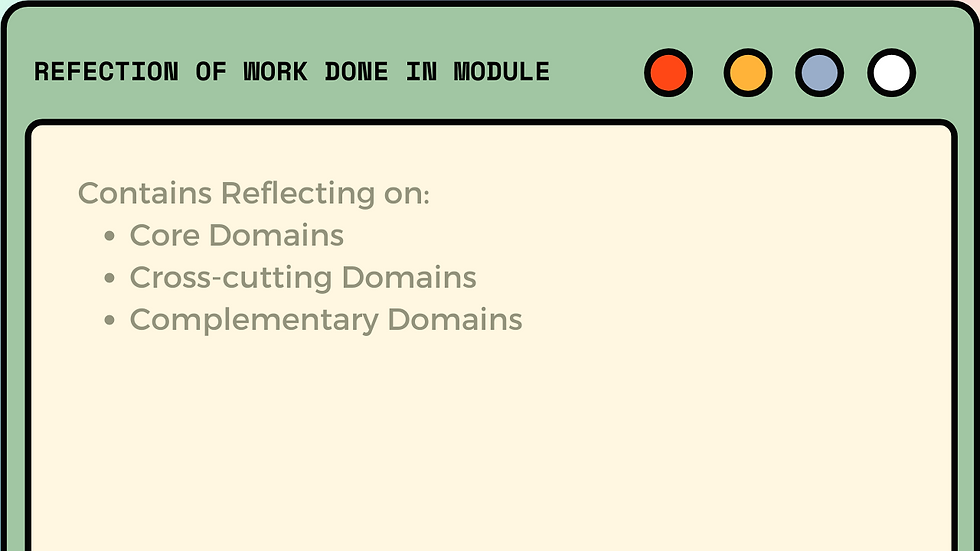Week 5 Reflection
- 2428616
- Sep 13, 2022
- 3 min read
Updated: Nov 2, 2022
This week we began a new module about service delivery. First, we analysed the levels of care which are primary, secondary, and tertiary. The primary level of care is the first point of entry when looking for healthcare services. During a presentation, we learnt that family and friends are part of the primary level of care, at the very bottom of the pyramid. For patients to enter the first level of health care, most consult their families and friends first. This level consists of clinics and community health centres. The secondary level of care includes district hospitals and referral (regional) hospitals. The district hospital can also be part of the primary level of care, any hospital services that are part of primary care are done in a district hospital. The services offered at the secondary level care are specialised, the patient requires the care of a specialist or special technology. The tertiary level of care and an additional level called the quaternary level require very specific technology and human resources. The more specialised the care. The more expansive it is to provide. Patients must be referred up and down the levels of care.
The provinces in South Africa are divided into municipal districts, which are boundaries which dictate how services should be provided in that area. Health services are delivered through the district health system. The district health system is an area in which healthcare services are managed and provided to a defined population. The district health system is the main vehicle through which primary healthcare services are delivered to a population. It comprises of district hospitals, primary health care (PHC) clinics, community-based health services and community health centres. A patient would be referred, this is a referral up the district health system, from the community-based health services (for example non-profit organisations and traditional healers) to the clinic then the community health centre (CHC) and lastly the district hospital.
Through the different levels of care, the health system can manage patients and ensure that they receive the necessary attention that they need for the kind of illness. The referral system ensures that expensive equipment, treatments, and the services of specialised professionals do not go to waste. We learnt in a previous session that a good health system keeps the cost down as well as provides quality services, the referral system is how a good health system keeps the cost down since smaller issues can be dealt with in clinics and CHCs. The formation of health districts also has advantages such as the management of health services is decentralised so that service delivery is simpler and more responsive.
Health services can be tailored to the needs of a defined population, which better meets the immediate health needs of that population. Decisions can be localised around the needs of the population. Health districts facilitate the involvement of communities in their specific needs. Collecting health information and reporting health statistics is easier and simpler.
Referral in South Africa needs to be improved for the full benefits to be realised. Firstly, as stated before patients often consult family and friends before they seek help from health institutions. There are some problems in the transition, ordinary people aren’t trained enough to know when to look for health care services, and there could be no money and no transport to the clinic, CHC or non-profit organisation (NPO). Once the patients do have access the staff’s attitudes and long waiting hours could be a barrier to them being referred to the necessary health institutions. Secondly, from the health care providers’ point of view, they could be dismissive of patients’ symptoms, ambulance time of arrival to transport the patient to the hospital that they were referred to, lack of infrastructure, there’s not very good communication between physician’s when a patient needs to be referred. All mentioned above should be improved for the referral system to function better in South Africa.
References:
Hodkinson P, Argent A, Wallis L, Reid S, Perera R, Harrison S, et al. (2016) Pathways to Care for Critically Ill or Injured Children: A Cohort Study from First Presentation to Healthcare Services through to Admission to Intensive Care or Death. PLoS ONE 11(1): e0145473. Available at:https://doi.org/10.1371/journal.pone.0145473Links to an external site. (Last Accessed: 13 September 2022)
Hodkinson, P.; Argent, A.; Wallis, L.; Reid, S.; Perera, R.; Harrison, S.; Thompson, M.; English, M. (2016). Pathways to Care for Critically Ill or Injured Children: A Cohort Study from First Presentation to Healthcare Services through to Admission to Intensive Care or Death (accessed from Pathways to Care for Critically Ill or Injured Children: A Cohort Study from First Presentation to Healthcare Services through to Admission to Intensive Care or Death | PLOS ONE)


Comments